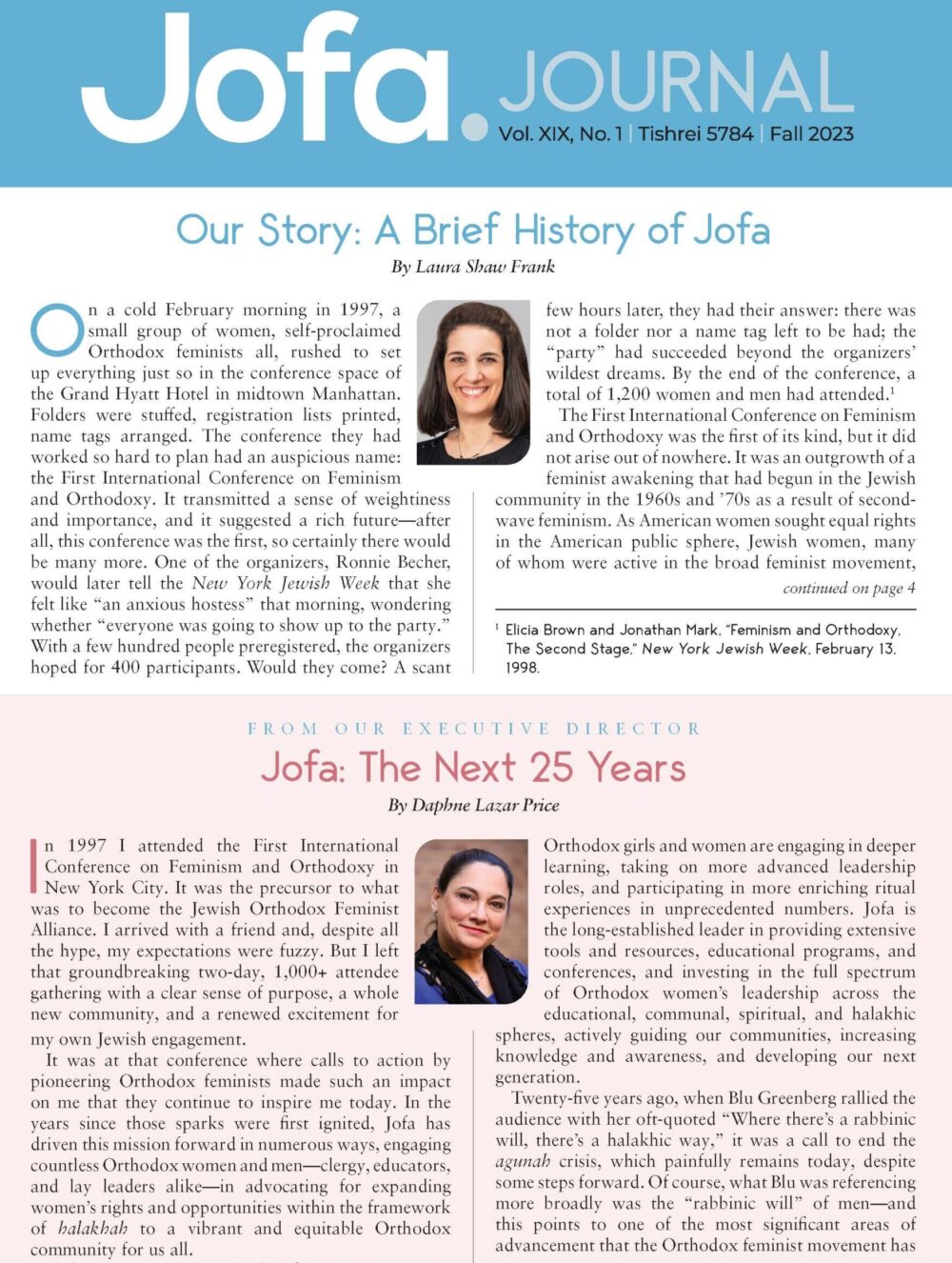By Sara Tillinger Wolkenfeld
“I don’t know when window shades were invented, but clearly that isn’t an option the Gemara is considering here,” I found myself saying to a class of fifteen college-aged students. At the time, I didn’t realize this would be a life-altering observation, tossed out nonchalantly in the middle of my course on “Hilkhot Roommates.” But as soon as I said it, I knew my relationship with teaching and the internet was about to change forever and for good.
Instantly, all fifteen heads in my class snapped down toward screens, and thirty hands began typing furiously. I was simply trying to give them a sense of the ways in which the sugya in Bava Batra might be thinking about visual privacy, but I had miscalculated the impact. For these young men and women, my lack of knowledge was a temporary challenge, easily overcome through reference to Google. There was no reason not to know the answer. We talked for a few extra minutes about where, how, and why window shades had been invented, and I suggested that to understand Ḥazal’s (the rabbis’) ideal window shade, we’d have to delve further into the sugya.
This was a turning point for me—even long after we had turned our collective attention back to the daf at hand. For the first time, I fully understood the forces released into the classroom by the presence of devices connected to the internet. For my students, demanding information from the cloud was already second nature. Additional information was easily available to them, and they didn’t think twice about supplementing the teacher’s knowledge with some simple online research.
For Learners of Text, a Technological Revolution
That the internet is changing learning and teaching is no surprise. Look no further than a quick Google search to see that educators and pundits have been writing about the questions raised by the digital revolution for years. There is no exact science to determine the precise impact of these tools on teaching and learning, but the one undisputed truth is that these fields are forever altered.
For learners of Jewish texts, a technological revolution is nothing new. We have weathered other shifts throughout our history: oral to written, manuscript to print, the invention of tsurat hadaf (the set arrangement of the page), and the mikraot gedolot (the primary text accompanied by selected commentators) are just a few examples of the ways in which technology has propelled our learning culture forward. As director of education for Sefaria, the world’s largest free library of digital Jewish texts, my goal is to help our community leverage technology and to elevate Jewish literacy for all.
Leveling the Playing Field
First, online texts allow us to level the playing field in Torah learning. Now, anyone with a device and an internet connection can instantly access the entire canon from anywhere in the world. Sefaria’s goal is to ensure that the texts that have always belonged to the entire Jewish people are freely accessible to all for generations to come. This is a sea change for us all, but it’s especially significant in the context of women’s learning; we don’t always have a physical beit midrash that will welcome us. One way of ensuring that women reach higher levels of learning is by ensuring, first and foremost, that they have a way to open up these texts.
But availability of the texts is only part of the equation. At Sefaria, we’re also deeply concerned with accessibility. That means, we’re driven to pioneer and innovate new ways of helping people find pathways into the texts. I love books and suspect that many of my fellow text-learners feel similarly. A favorite dog-eared and underlined volume of Talmud, a treasured Tanakh, a siddur that we use every day—these are trusted companions throughout our religious lives. The experience of opening a new book, however, can be a foreign and even alienating experience. What is it? How do we use it? How will we find meaning in it?
For those of us embracing Jewish textual learning for the first time, or for others who were previously barred from studying Talmud or other texts, the tools that digital technology packs into this learning experience are invaluable. Features such as topical search and built-in dictionaries can help people navigate new materials with greater comprehension than ever before. The ability to see user-generated content side by side with traditional texts can help people feel more at home in unfamiliar works.
One of the frequent critiques of the digital age is that learners today will internalize less information because we can so easily access knowledge as we need it. But in my work with Sefaria, I’ve learned that there’s a lot to be optimistic about. The internet allows for linking ideas and concepts and helping people move between them. The discovery and creation of connections between ideas is, significantly, a key component of Torah learning. New insights—ḥidushim—come about when you can see new relationships and new conclusions, and the internet empowers these moments of discovery. In my work at Sefaria, I see the myriad ways in which new learners can take advantage of the connections built into our site: discovering fresh parallels and configuring and reconfiguring knowledge in previously unexplored ways. When educators take advantage of the ease with which students can move between texts, the constant availability of knowledge is an opportunity, not a setback.
A Platform to Lift Up Women’s Torah Voices
This process of building new knowledge and generating ḥidush is amplified by the publishing platform of the digital beit midrash. As a female Torah scholar, I am aware that the traditional bookshelf in all the learning spaces I’ve been in contains very few works authored by women. I attended Jewish day school and went on to study Torah at several yeshivot in Israel and America, yet I was 27 years old the first time that I had a female Talmud teacher. I never had difficulty feeling connected to Ḥazal, yet the experience of learning Gemara from a woman was transformative for me.
Similarly, Sefaria is a platform to lift up women’s Torah voices and intertwine them with our ancient texts. Sefaria actively seeks out works of Torah by women that can be added to our database. In addition, learners everywhere—regardless of their gender—can publish their work on Sefaria. Our library of sheets represents a huge corpus of modern Torah. As on all media platforms, women are often reluctant to publicly share their thoughts, but we are committed to encouraging them and making it possible for people to learn from all the different Torah voices in our community. Publishing new insights or a fully formulated shiur is empowering and helps shape the learning of the next generation. The future of Torah is one in which the shelves of the beit midrash are infinitely expandable and easily searchable, so there is room for everyone to contribute.
A Vision of All Levels of Learners Participating
The Gemara in Ta’anit asks why the verse in Proverbs, “it is a tree of life to those who hold fast to it,” compares Torah to a tree. It answers that the analogy is meant to teach that just as a small piece of wood can ignite a larger one, so too, minor Torah scholars can sharpen great Torah scholars. The vision of all levels of learners participating together in a community of study, bumping up against one another and sparking ideas, is one that resonates for me in thinking about Sefaria’s library.
Like most technological changes, the shift to digital texts is notable for its impact on the power structures of the community of scholars. More people can participate, and voices of “minor” learners can rise to the top when they express thoughts that others recognize as significant. Learners can access the same texts as their teachers, and quickly move from one source to another, pursuing their own questions and even creating their own materials. I believe this shifting power dynamic is part of what people sometimes resist about the advent of digital texts.
As I experienced with my students on the day that I wondered aloud about window shades in the Gemara, it can be destabilizing when your students bring new and unexpected knowledge into the classroom. It can change the direction of a conversation, provide an answer for something that the teacher intended to leave open, or empower students to think differently from their superiors. With the vision of the Gemara in Ta’anit in mind, I believe this will ultimately be to the benefit of Torah, as more and more people are able to take hold of the branches and spread the message.
Sara Tillinger Wolkenfeld is the director of education at Sefaria, an online database and new interface for Jewish texts. She is also a fellow of the David Hartman Center at the Shalom Hartman Institute of North America. Her previous experience includes serving as director of education at the Center for Jewish Life—Hillel at Princeton University, as part of the Orthodox Union’s Jewish Learning Initiative on Campus. She studied Talmud and Jewish Law at Midreshet Lindenbaum, Nishmat, Beit Morashah, Drisha, and Pardes, and lectures frequently at synagogues, schools, and university communities. She lives in Chicago with her husband and their five children.
Callouts:
The future of Torah is one in which the shelves of the beit midrash are infinitely expandable and easily searchable, and so there is room for everyone to contribute.
One way of ensuring that women reach higher levels of learning is by ensuring, first and foremost, that they have a way to open up these texts.











